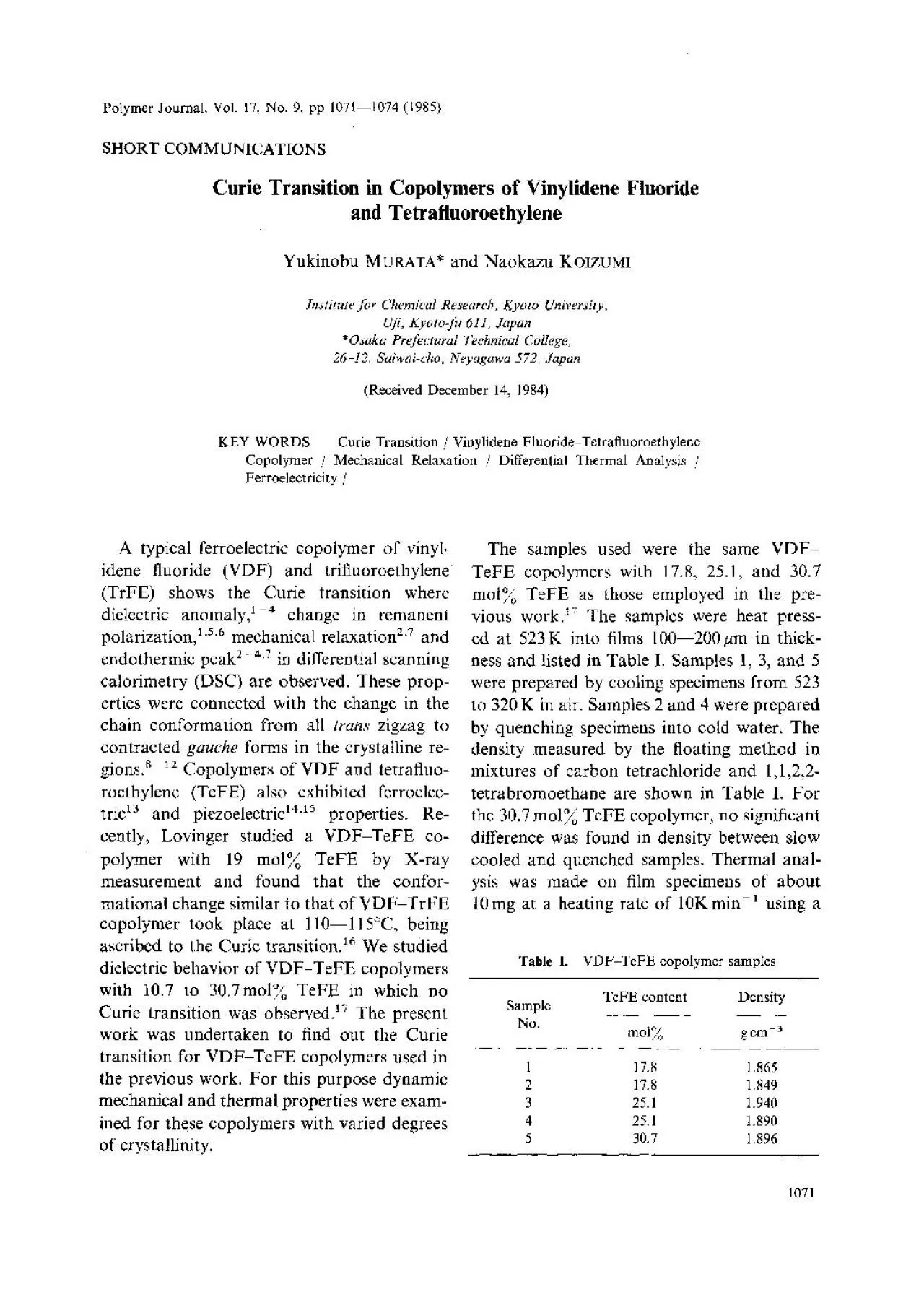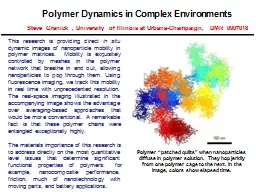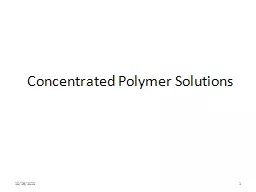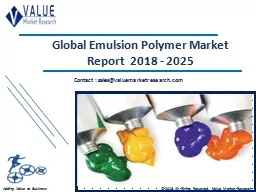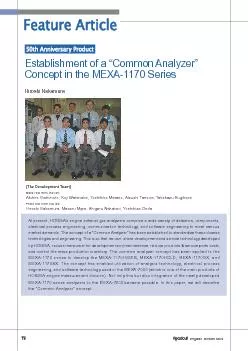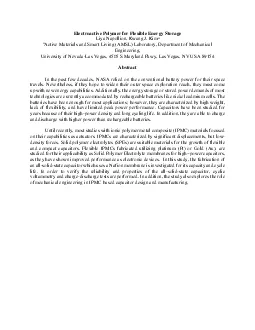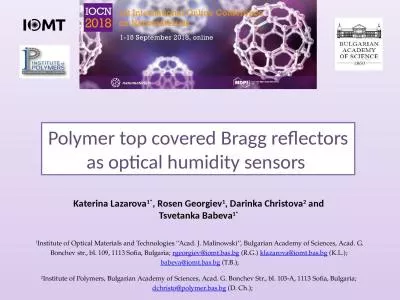PDF-Polymer Journal Vol 17 No9 pp
Author : ani | Published Date : 2021-08-17
10711074 1985 SHORT COMMUNICATIONS Curie Transition in Copolymers of Vinylidene Fluoride and Tetrafluoroethylene Yukinobu MURATA and Naokazu KOIZUMI Institute for
Presentation Embed Code
Download Presentation
Download Presentation The PPT/PDF document "Polymer Journal Vol 17 No9 pp" is the property of its rightful owner. Permission is granted to download and print the materials on this website for personal, non-commercial use only, and to display it on your personal computer provided you do not modify the materials and that you retain all copyright notices contained in the materials. By downloading content from our website, you accept the terms of this agreement.
Polymer Journal Vol 17 No9 pp: Transcript
Download Rules Of Document
"Polymer Journal Vol 17 No9 pp"The content belongs to its owner. You may download and print it for personal use, without modification, and keep all copyright notices. By downloading, you agree to these terms.
Related Documents

